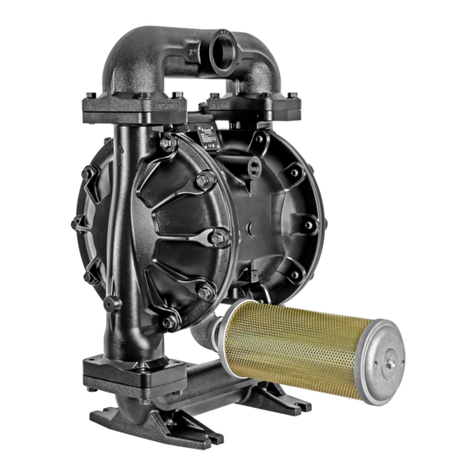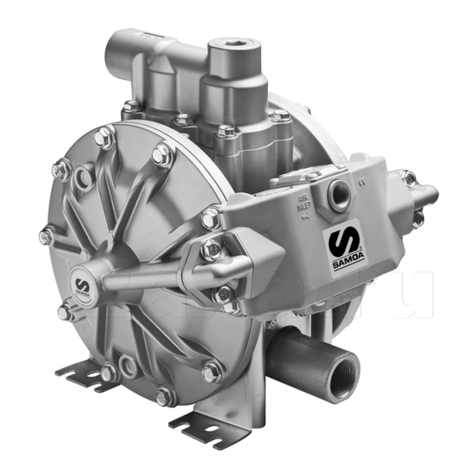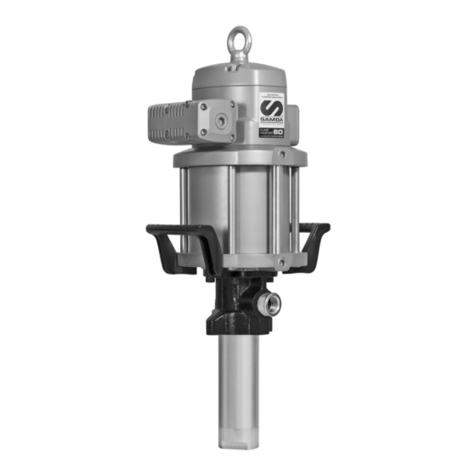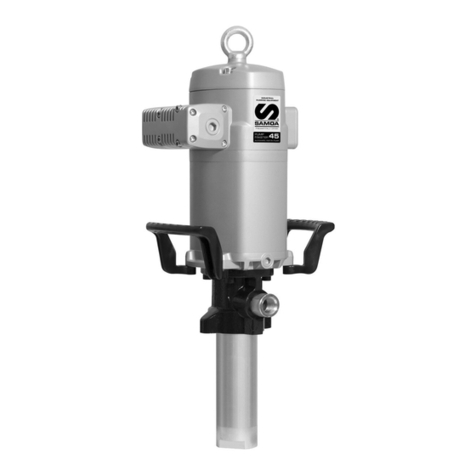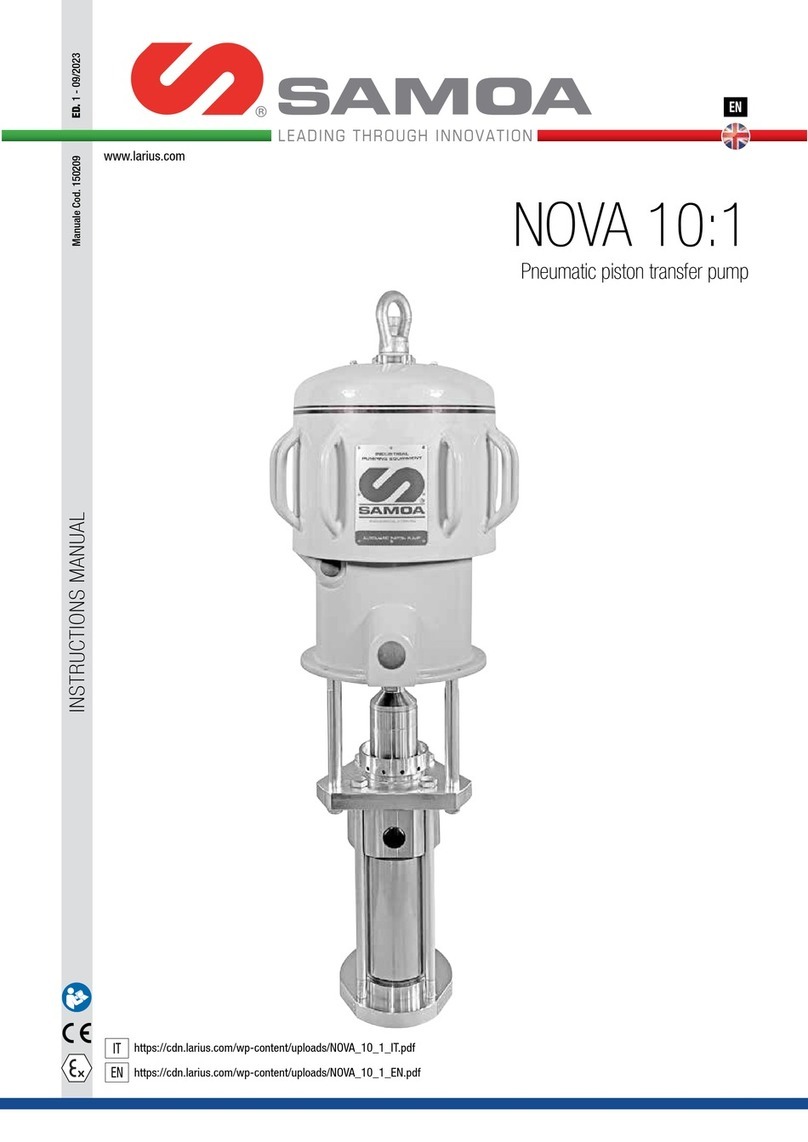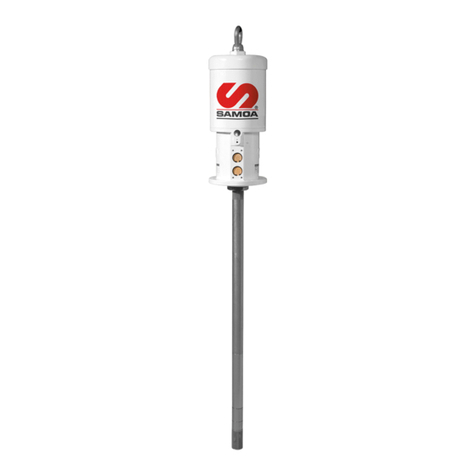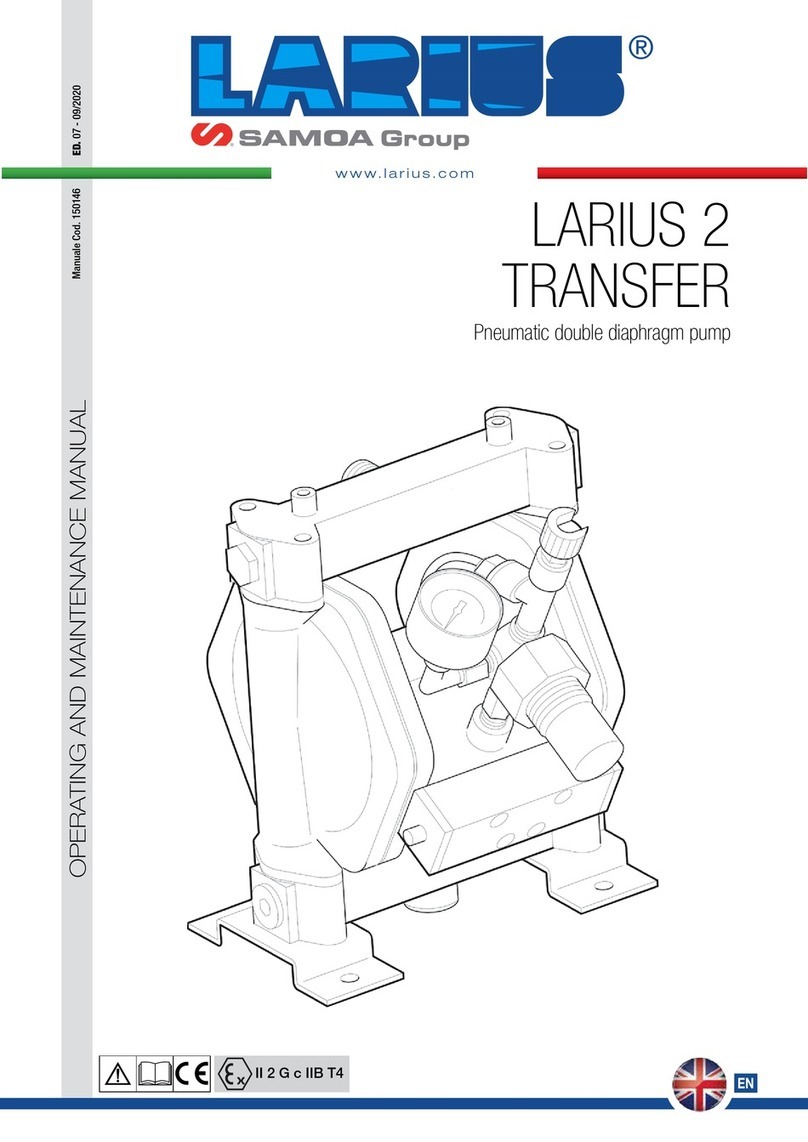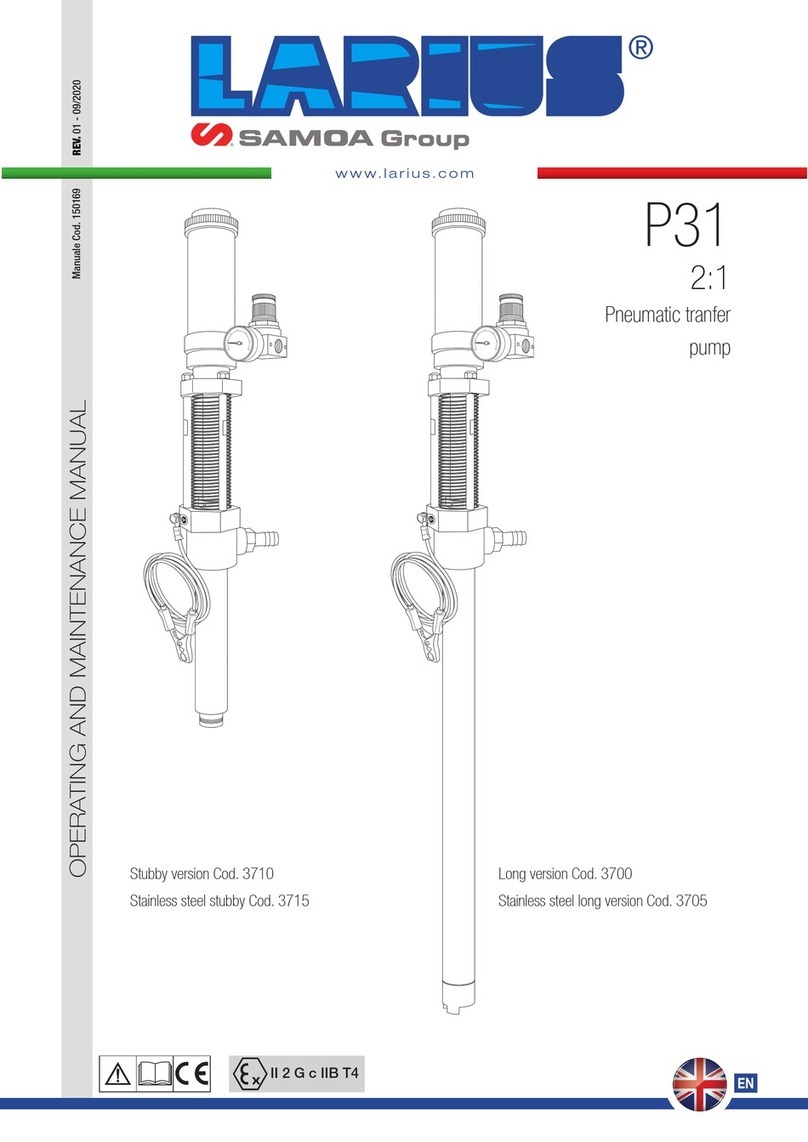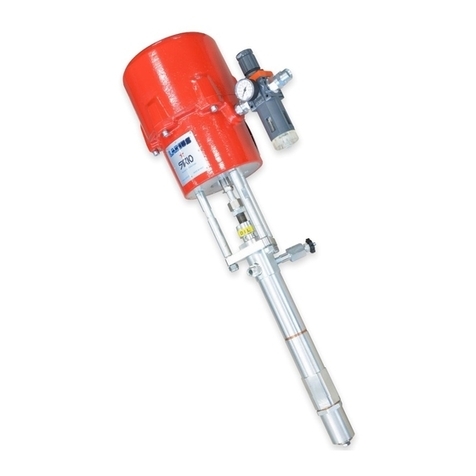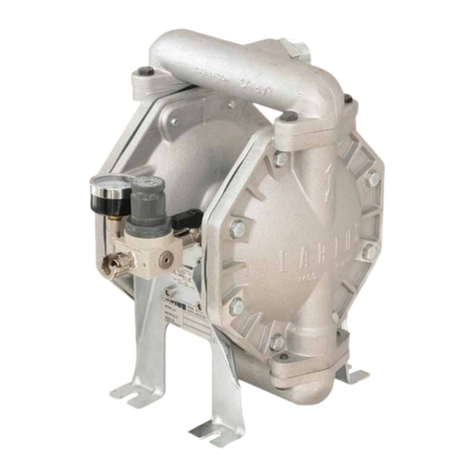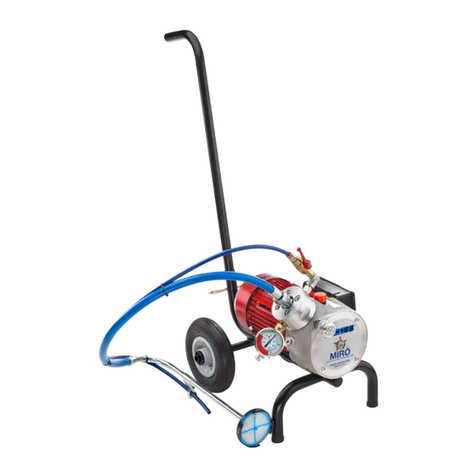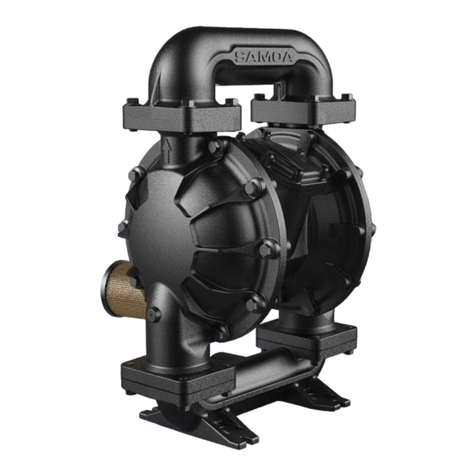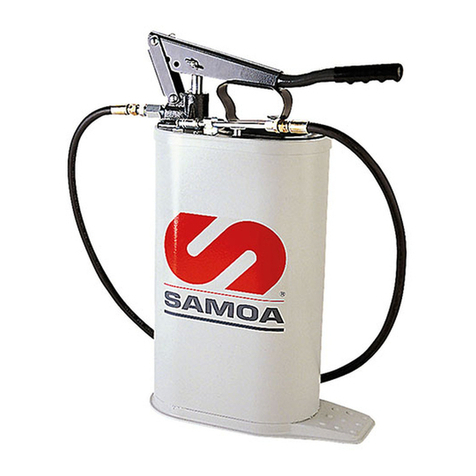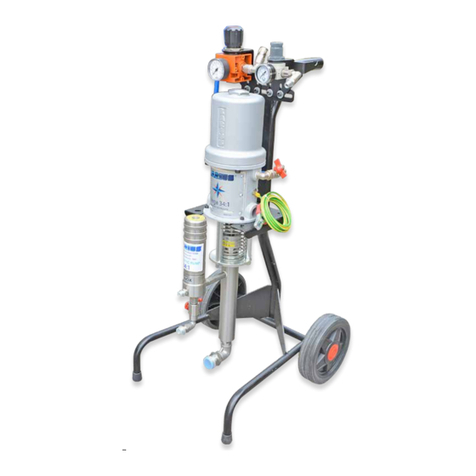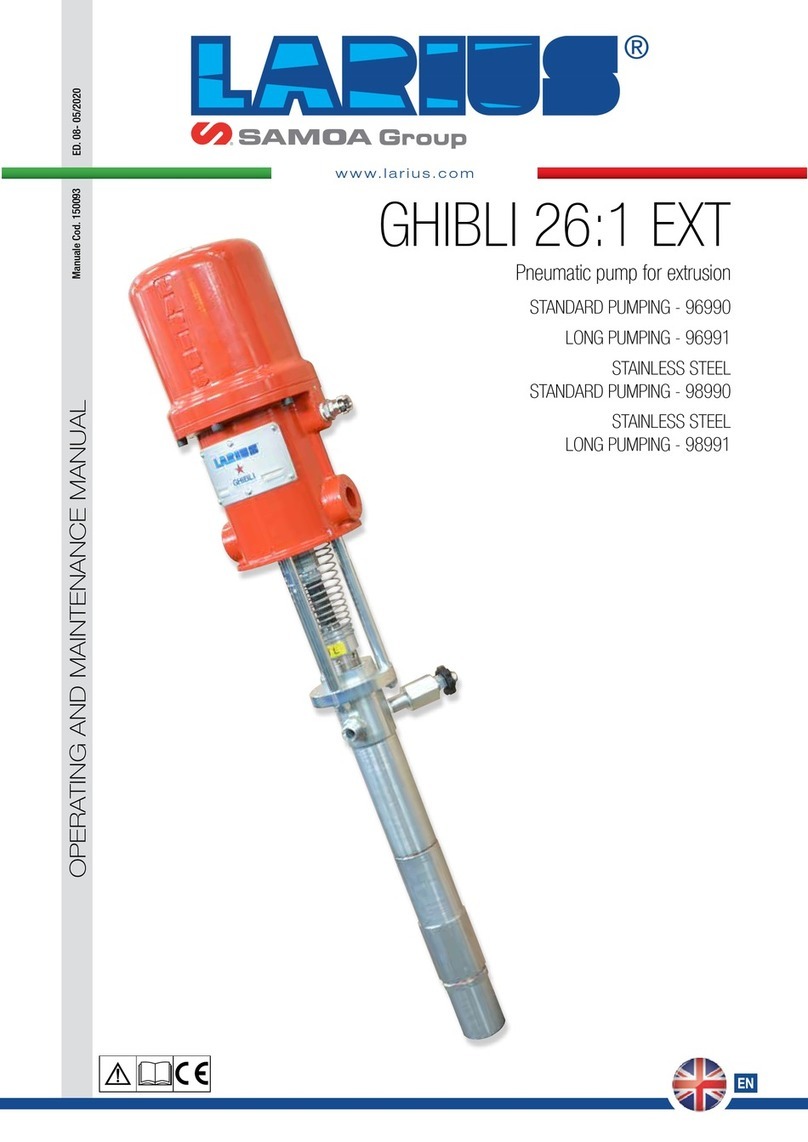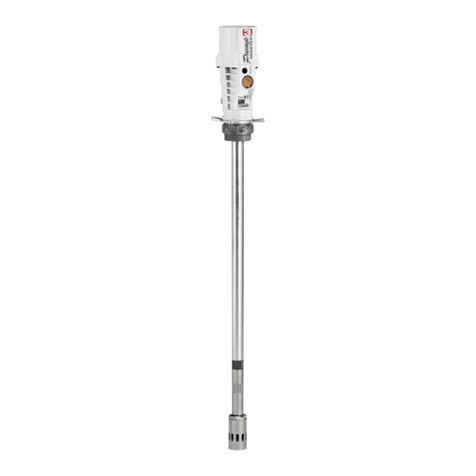
10 839 805 R. 02/22
SAMOA Industrial, S.A. · Pol. Ind. Porceyo, I-14 · Camino del Fontán, 831 · 33392 - Gijón - Spain · Tel.: +34 985 381 488 · www.samoaindustrial.com
2022_02_23-15:00
EN
SAFETY REGULATIONS
SAFETY CHECKS (BEFORE STARTING UP)
• For your safety and for the optimum service life of your machine,
periodically inspect the machine from top to bottom before starting up.
• In particular, keep a watch out for loose bolts, missing bolts, build-up of
dirt, spillage of liquids, etc.
RUNNING
• If the machine is not running properly, or has parts missing or is out
of-adjustment, stop the machine and repair it.
Failure to observe this rule may lead to personal injuries.
• If a machine has not been fully repaired, it should not be re-started
without the agreement of the immediate superior, who in giving his
approval takes on all responsibility for incidents or accidents resulting.
SERVICING-MAINTENANCE
• Always bear in mind that if servicing is not carried out carefully, observing
all current recommendations, serious damage may occur which will be
outside the terms of our guarantee.
• When servicing requires the work of several operators, there must be clear
instructions for the tasks to be carried out. This is so that the manoeuvres
and work between the members of the team are perfectly co-ordinated.
Safety of all team members should be the prime concern of each
individual team member.
• Never start repair work if you are unable to carry it out or complete it.
• During maintenance and servicing operations no unauthorised people
should ever be permitted to work on the machinery.
• Always use the right tools for the tasks.
• Use cleaning products with care, they may be toxic and inflammable.
• The welding of parts onto the machine may damage mechanical and
electrical elements. This sort of operation should not be carried out
without consulting the manufacturer. Any disregard for this rule
automatically nullifies the manufacturer’s guarantee.
• For your safety and to avoid your own liability, only use MIL’S parts when
replacing malfunctioning or broken down items.
• The immediate superior should be notified of all maintenance or testing
operations on the equipment.
• During all maintenance operations the work area must be clearly delimited
by white lines. At night, the area should be adequately lit.
• The lifting points are indicated by the or pictogram. During
lifting operations, the machine must not be hoisted from any other point.
• If the machine has to be hoisted and moved for siting or maintenance
operations, check that adequate lifting gear is used and familiarise
yourselves with all the safety regulations surrounding the lifting of
machinery.
• Under no circumstances should the machinery be needlessly suspended
(during meal breaks, outside working hours, etc.)
• Following any work or repair on a machine function, carry out a check to
see that this function has been rectified before using the machine.
PLANNING MAINTENANCE OPERATIONS
Many accidents can be avoided by organising maintenance operations. The
supervisor must be clear about the tasks to be carried out and the possible
risks involved. He should draw up a maintenance plan and explain it to all
the people concerned so as to limit the risk of accidents.
The following pointers should be taken into account (non-exhaustive list):
• Which team members are needed for the work and what are their
responsibilities?
• What is the weight of the load that may have to be lifted?
• What tooling is required for the job and how is it to be conveyed to
the work area?
• What equipment is required to lift the equipment in absolute safety?
ELECTRICITY
• The supply voltage must not vary by more than 10%.
• An appropriate thermal relay is required for approved connection. The
safety trip rating of the motor must equal the motor rating given on the
manufacturer’s plate.
• After connecting the motor or after each reconnection use a phase
indicator to check the direction of rotation of the motor.
• The machine must be powered down whenever an electrical component
is replaced.
• Before carrying out electrical connections on the machine, check that the
voltage and supply frequency prevailing in the country of usage are
identical to the operating voltage of the machine.
The electricians commissioned to set up the machine are entirely responsible
for the sizing of the electricity supply cable as well as all external cabling.
The electrical connection of the machine must be carried out by a
qualified electrician in compliance with regulations prevailing in the
country where the machine is in use.
• Before carrying out any breakdown repairs or servicing, the machine must
be partially or totally isolated and taken out of service.
• Any person carrying out servicing or breakdown repairs on a powered
machine, must be qualified and suitably skilled to carry out such
operations within that context. The machine must be partially taken out
of service to prevent any other person starting it up.
• In the case of an electrical power cut or the tripping of a safety device,
automatic restart of the machine must be disabled under all circumstances.
• Do not carry out any electrical connection or disconnection without knowledge
of the circuitry. A faulty connection may cause personal injury or damage.
• Never wear any rings, bracelets or any other metallic object likely to earth
a powered circuit, thereby causing burns.
• Following any work or repair on a machine function, check that this
function has been rectified before using the machine.
• If maintenance operations are carried out on the machine while powered
up, sparks may be produced on the electrical circuit. Do not work in
confined areas in the presence of inflammable material, dust or vapour
which could cause explosions or fires. Failure to observe this rule could
result in personal or fatal injury.
FLUIDS
• A vacuum pump must be connected to suction piping without any
mechanical stress. You are recommended to install flexible piping between
the pump and the installation.
• A compressor, wherever possible, should be connected up for use by a
pressure resistant flexible hose.
• The suction pressure of vacuum pumps must never exceed atmospheric pressure.
• The cross-section of vacuum pump exhaust lines must be at least as great
as that of the pump connection hole. Too small a diameter on the line
may create unacceptable pressure in the pump.
• No part of the casing should be exposed to vacuum or pressure.
• Do not start a vacuum pump running if its exhaust lines are blocked or
constricted. Before starting the pump, check that the exhaust line is open
and that it is free of any deposit that may have built up inside it.
• The choice of pipe materials should be appropriate for the process fluid.
